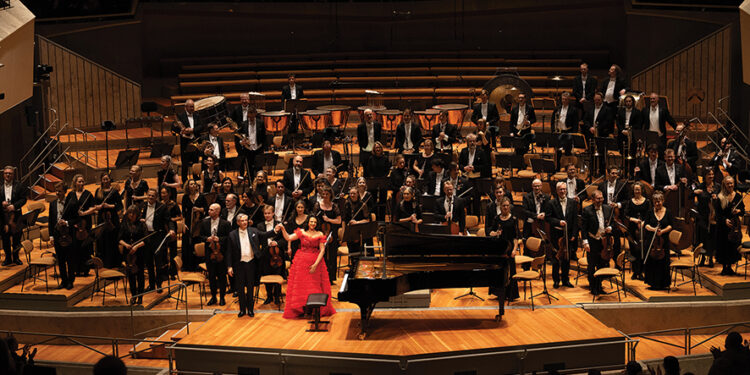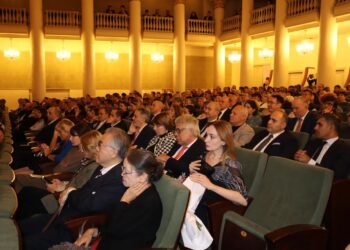Amidst heated debates as to whether Georgia is part of Europe, and how its integration into the EU can be solved in the most rapid and cost-effective way, local art scenes are being literally torn apart by the non-stop protests all over Georgia and abroad against the ruling party in Tbilisi, which they accuse of election and other fraud. At this historical turning point, Khatia Buniatishvili’s concert in the Berliner Philharmonie got extra media attention and was bestowed with something of a symbolic meaning.
Organized by Konzertdirektion Hans Adler, it was a true celebration of music- not as means to ignore politics, but as a sign that Georgian musicians are an integral part of common European cultural heritage, cherished by people deep in their hearts across borders. The concert program, including Rachmaninov and Mahler, saw Bent Sørensen using the occassion to mark the 100th anniversary of the Danish National Symphony Orchestra. On this occasion, the ensemble embarked on an extensive European tour under the baton of Conductor Fabio Luisi with Khatia Buniatishvili starring as solo pianist. The first concert of the tour took place in Berlin on January 13, and was an absolute hit with the public.
Rachmaninov’s Piano Concerto No. 2, often referred to as “Rach 2,” is one of the most demanding works in the piano repertoire, celebrated for its emotional depth, technical challenges, and sweeping Romanticism. Its intricate interplay between piano and orchestra, coupled with its soaring melodies and dramatic intensity, makes it a pinnacle of virtuosity and expressiveness.
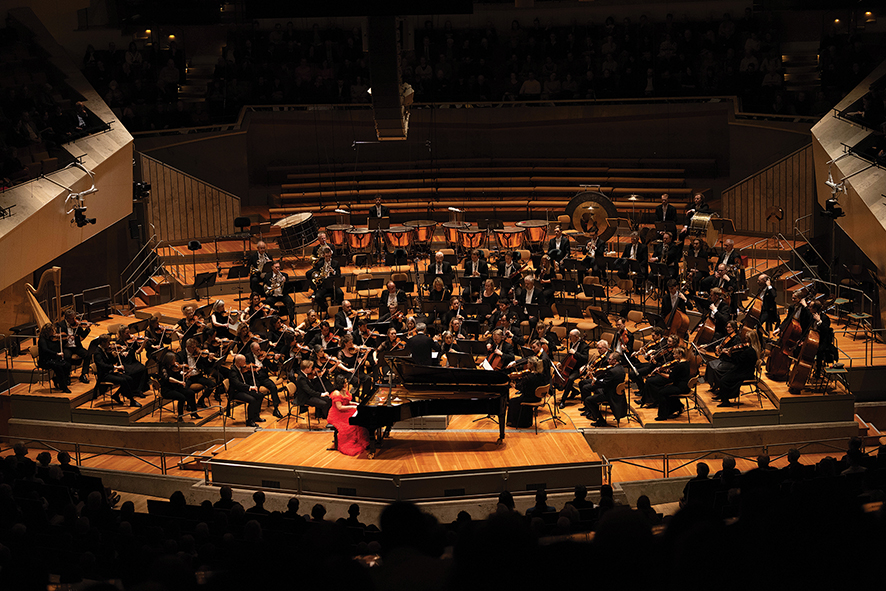
Khatia Buniatishvili’s interpretation of Rachmaninov’s Third was a powerful blend of technical brilliance and emotional vulnerability. Her playing is marked by a remarkable command of the concerto’s complex passages, coupled with her unique ability to bring out its lyrical and melancholic undertones. Buniatishvili approaches the piece with a deeply personal touch, often infusing it with a heightened sense of drama and spontaneity. Her dynamic phrasing and bold contrasts capture both the grandeur and intimacy of the concerto, making her performances unforgettable for audiences.
Gustav Mahler’s relationship with politics on the other hand was complex and largely indirect. As a composer and conductor, Mahler was more focused on artistic expression than on overt political statements. However, his identity as a Jewish artist in late 19th- and early 20th-century Europe, a period marked by rising nationalism and antisemitism, often placed him in politically charged contexts. His conversion to Catholicism in 1897, likely motivated by the need to secure his position as director of the Vienna Court Opera, underscores the political pressures he faced. Despite these challenges, Mahler’s music reflects a deep engagement with existential and spiritual themes, transcending the political conflicts of his time.
Khatia Buniatishvili’s piano virtuosity is marked by her breathtaking technical skill, bold interpretive choices, and an emotional intensity that captivates audiences. Known for her dynamic stage presence, she brings a distinctive blend of power and sensitivity to her performances, effortlessly navigating the most demanding passages while imbuing each note with profound expressiveness. Her interpretations often push boundaries, making familiar works feel fresh and deeply personal. Whether tackling the fiery drama of Liszt or the nuanced poetry of Rachmaninoff, Buniatishvili consistently delivers performances that are both technically dazzling and deeply moving. For those who haven’t had the chance to attend the event this Monday good news is that her next concert in Berlin is already scheduled for spring 2026.
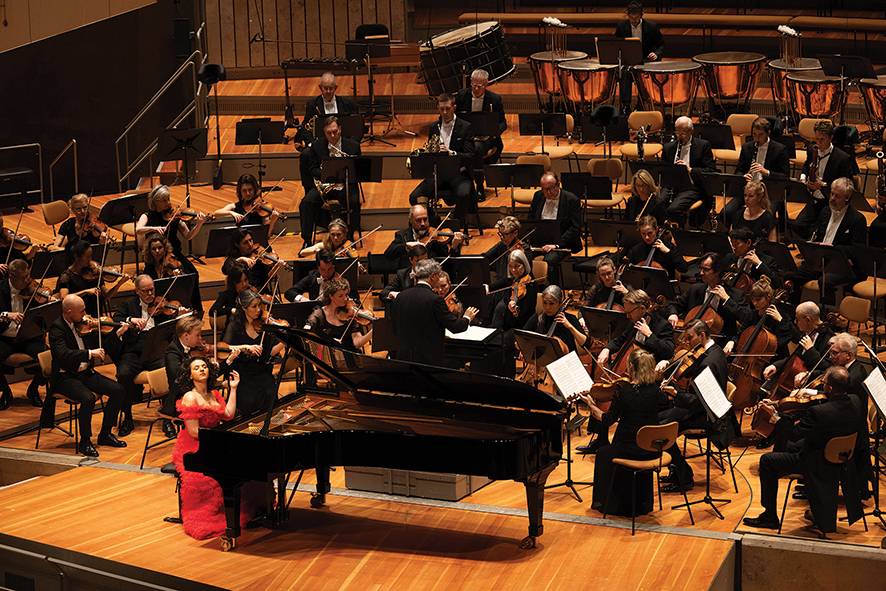
Reviving Nude Dance: Kysy Fischer’s Bold Reinterpretation at Tanztage Berlin
It’s common knowledge that women in arts have it particularly hard. Institutions therefore are now more likely to go off the beaten path and introduce female artists into their programs. Super Superficial by Kysy Fischer on January 9 ushered in the Tanztage Berlin at Sophiensaele, reviving the centuries long tradition of nude dance. Naked dance movement in Berlin during the 1920s used to be part of the broader cultural and artistic experimentation of the Weimar Republic, characterized by a spirit of liberation, modernism, and rebellion against traditional norms. Often associated with the Freikörperkultur (Free Body Culture) and avant-garde performance art, these dances combined elements of expressionism, naturalism and social critique.
Now almost a hundred years later, choreographer Kysy Fischer, together with her dance counterparts, managed to get to the very core of it showing what’s going on beneath the superficiality of appearances. Her whole piece was an outburst of rage pushed to the limits, with spells of idyllic elegance followed by outbreaks of savage fierceness of contorted muscles, grimaces nurtured by the accumulated force of protest against the long established canons of grace as we know it from art history. Citations from Greek antiquity with its immediately recognisable postures clashed with rebellious denial to fake these for the sake of commonplace demands and public pleasures. The performance was a spectacular attempt at bodily liberation celebrating the return to primordial natural powers, orgiastic female frenzy reminiscent of Dionysian rituals of Maenads losing themselves in ecstatic dances combined with a witty take on female desire. The performance took place as a double bill with WET HOT WOMBS – Bathing into other Bodies by Tentacular Figurings. Tanztage Berlin will go on till 25.1. 2025. According to Stuttgart based Georgian actress Mariam Jincharadze in “100 Seconds for Arts” film trailer on Otto Dix’s portrait of Berlin’s most notorious nude dancer Anita Berber, she never grew as old as she looks in that picture.
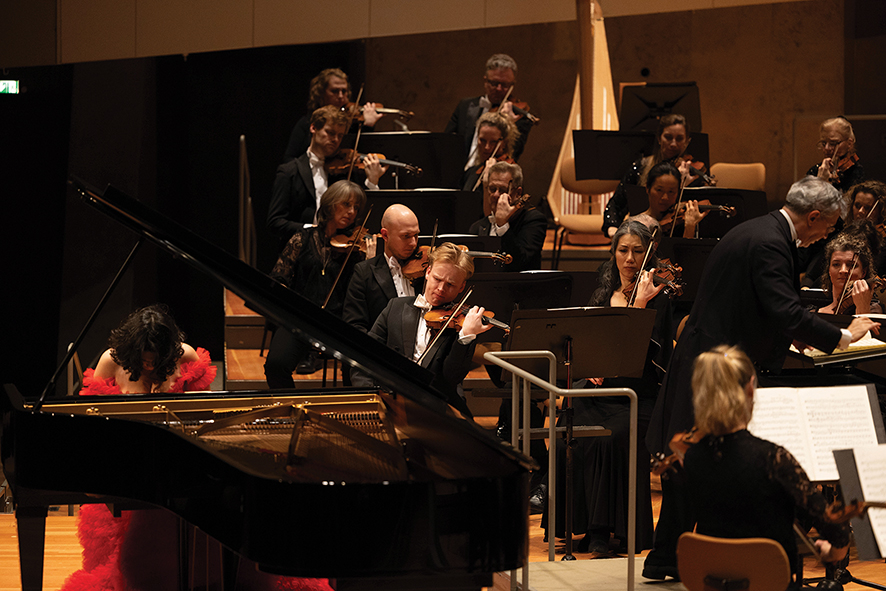
Drama Reimagined: Constanza Macras’ DorkyPark Critiques Women’s Struggles in the Arts
Times change, but the destinies of women in the arts remain largely the same. Female artists around the world suffer most from the effects of old-age poverty, disease, and neglect. This formed the core of Constanza Macras’ Drama by DorkyPark, which garnered high praise at Volksbühne Berlin. The piece explored the depths of the genre through historical and feminist perspectives. The essence of human drama was staged through a series of spectacular performances arranged like a variety show in a revue theater, nostalgically longing for the former glory of such venues. Some segments were connected by a general plotline, while others stood alone. The performance dazzled with costumes, showbiz extravagance, and excess, revealing the personal dramas of the protagonists, private existential crises, or critiquing the incompetence of contemporary theater directors, who prefer bizarre yet fashionable politically charged concepts for box-office success instead of delving into the true art of dramatic direction.
Various showbiz injustices were brought to light, from the gender pay gap to the financial precarities faced by performers with migration backgrounds, and the despair of aging. The performance commemorated strong female characters from theater history, such as La Revista Argentina and its stars, Nélida and her rival divas.
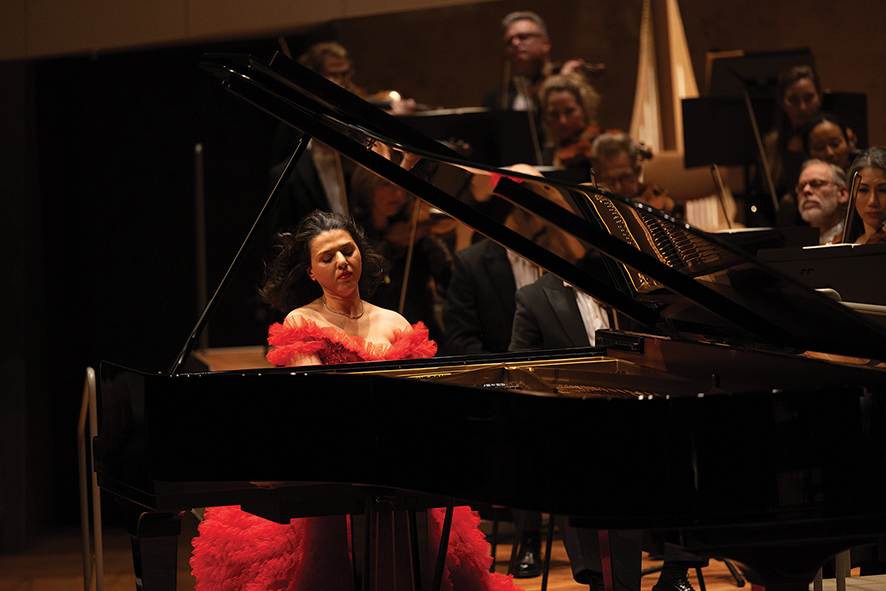
Most importantly, the relevance of drama itself—despite all its circus-like thrills—was questioned in our contemporary digital age, where old-fashioned notions of authenticity, aura, and immediacy are replaced by digital copies on social media: endless reiterations of the same. The history of drama itself, from Antigone to Shakespeare and beyond, was paraded in a dramatic, witty, hilarious, and nostalgically touching way, accompanied by impressive stage effects and acrobatic stunts. The performance illuminated this make-believe world of unfulfilled promises of fame and glory. Not to mention the spectacular stage props, which were given extra prominence in enhancing the spirit of the drama—such as the shaking trees, literally shaken by the protagonists in a broken rhythm, leaving us shaken by it all.
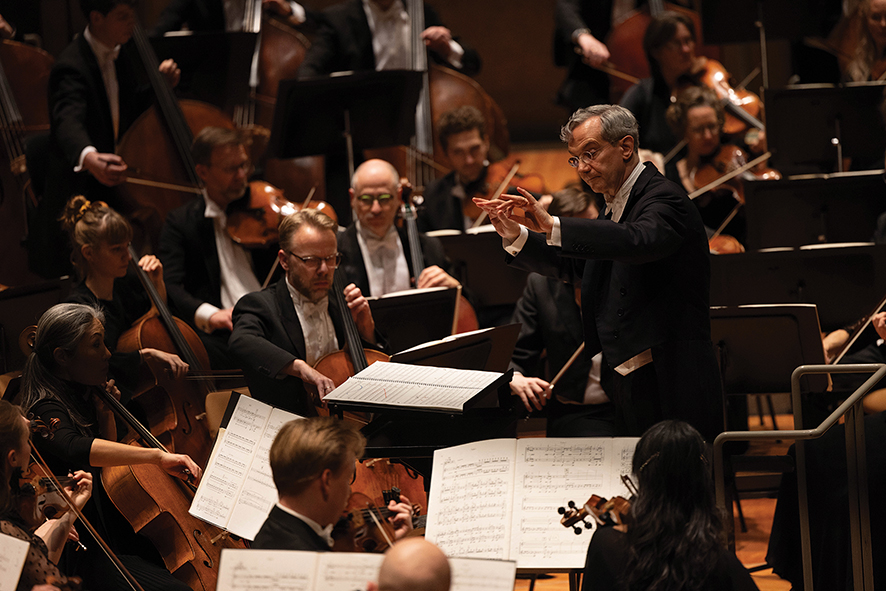
In the decades following the fall of Berlin Wall, the city has been struggling on its uneasy way towards establishing itself as the cultural capital of Europe. With an impressive variety of theaters, operas, concert halls and off-spaces of all sorts attracting an ever-increasing number of artists one would presume that quantity would go into quality. Probably not good enough for the Berlin local governments that recently opted for the drastic cuts of the cultural budgets. Berlin’s vibrant cultural life will certainly lose some of its flair, therefore the events reviewed here are of particular significance as they took place directly in the aftermath of the massive protests by artists and respective culture institutions demanding the revision of the local fiscal policies, which once again confronts us with the essential question of how relevant art is for us today in times of political turmoil and digital transformations.
By Lily Fürstenow

